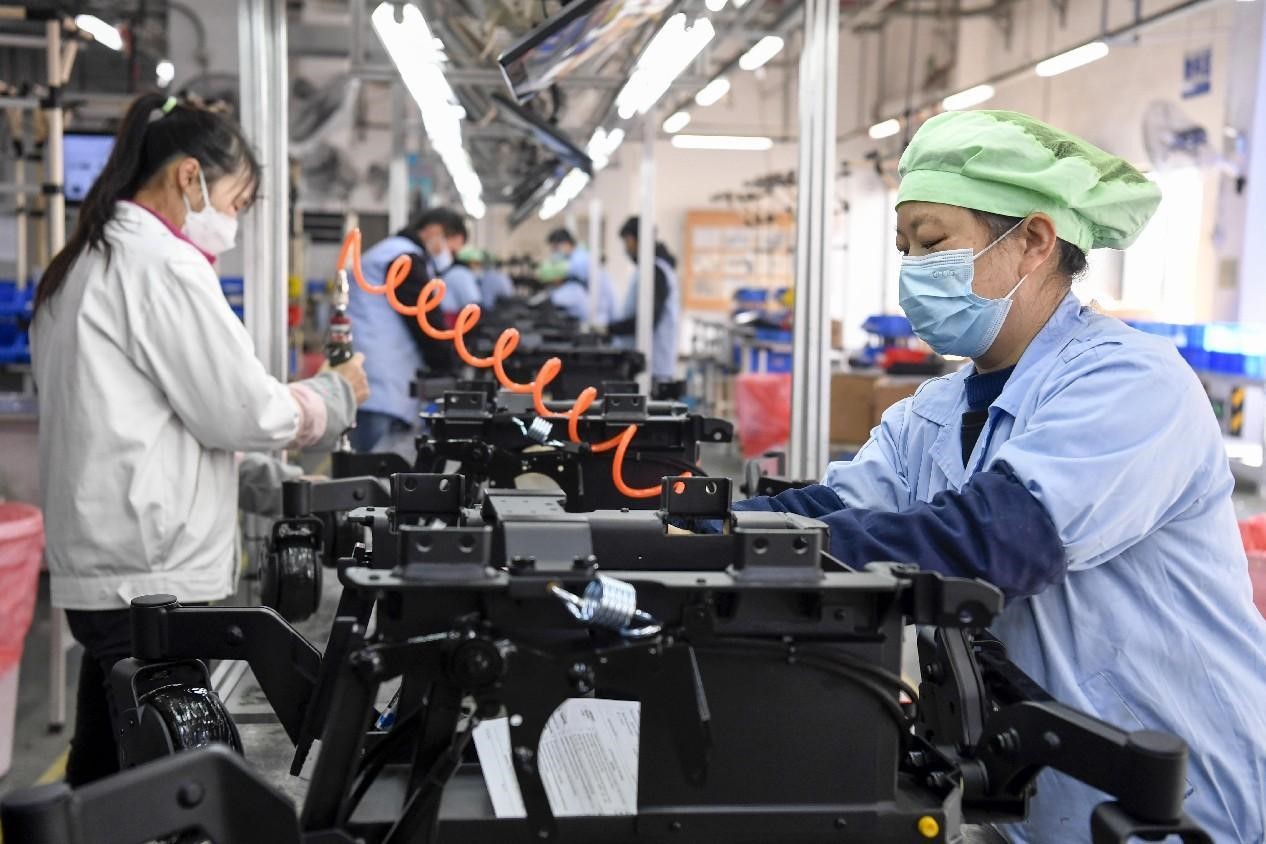China's annual foreign trade value topped 40 trillion yuan (about $5.94 trillion) for the first time in 2022, and the country maintained the world's largest trading nation in goods for six consecutive years.
As the new year has arrived, foreign trade enterprises are going all out to embrace the overseas market.

Photo taken on Jan. 28, 2023 shows a busy scene at a container terminal in Haikou, south China's Hainan province. (People's Daily Online/Yang He)
At the Zhoushan port in Ningbo, east China's Zhejiang province, containers were unloaded from two 200,000-ton vessels by 45 bridge cranes and 122 gantry cranes.
Such a busy scene at the port was a result of the diligent work of foreign trade enterprises, including Bianfeng Machinery Group based in Jiashan county, Zhejiang province.
"Our new orders have been scheduled to March and April. It's a bumper year for foreign trade companies," said Wang Shengshuang, chairman of board of the company.
According to Wang, the company plans to join over 10 international exhibitions this year and will invite its foreign clients to have investigation tours to the company.
"Meeting clients is meeting opportunities," the man said.
This year, multiple provinces, including Jiangsu, Guangdong, Zhejiang, and Sichuan, have sent business delegations overseas and invited foreign merchants to China. They have also launched a series of measures to better facilitate the trade sector, which enhanced foreign trade enterprises' confidence in expanding market.
"Before the Chinese New Year, we had already stocked up our overseas warehouses, so that commodities could be immediately shipped to foreign consumers," said Zeng Qiuping, who runs an appliance company in Shunde district, Foshan, south China's Guangdong province.

Workers manufacture electric wheelchairs to be exported to the U.S. and other countries in a workshop of a company in Fengcheng, east China's Jiangxi province, Jan. 31, 2023. (People's Daily Online/Zhou Liang)
Though workers were on vacation during the Chinese New Year, the company's foreign trade business was not suspended, Zeng told People's Daily.
Compared with the traditional make-to-order strategy, cross-border e-commerce directly faces consumers and production can be scheduled in advance based on previous sales data.
Zeng said the overseas warehouses of his company make logistics more efficient and thus improve consumers' experience. "The export volume of our capsule coffee machines is expected to rise by over 25 percent this year," the man noted.
Because of its advantages, such as online transaction and short transaction chain, cross-border e-commerce is favored by foreign enterprises. New business forms of foreign trade services emerged, including overseas warehouses, constantly improving the quality and efficiency of China's foreign trade sector.
On Jan. 2, 2023, the Regional Comprehensive Economic Partnership (RCEP) agreement took effect in Indonesia. Obtaining the RCEP certificate of origin, a food additive company based in Nantong, east China's Jiangsu province, enjoyed a tariff reduction of around 42,000 yuan ($6,245) for a batch of aspartame it exported to the Southeast Asian country, which was worth $117,800.

Solar panels are being produced by robotic arms in a workshop of Ronma, a photovoltaic product manufacturer in Dongying, east China's Shandong province, Jan. 6, 2023. (People's Daily Online/Zhou Guangxue)
"This policy just boosted our confidence," said Yu Haifeng, manager of the commerce department of the company.
According to him, Indonesia is the company's regular market. Before the RCEP agreement took effect, the Chinese food additive manufacturer had to pay tariffs at a rate of 5 percent for its exports to Indonesia, and now the tariff stands at zero, Yu said.
In the past year since the world's largest trade deal came into force, China has further strengthened its cooperation on trade and investment with other RCEP members. Last year, China's foreign trade with the other 14 RCEP economies grew by 7.5 percent on a yearly basis to 12.95 trillion yuan ($1.93 trillion), accounting for 30.8 percent of the country's total exports and imports.
So far, China has signed 19 free trade agreements with 26 countries and regions, with partners covering Asia, Oceania, Latin America, Europe, and Africa.
责任编辑:杨柳
审核:刘海龙
图片版权归原作者所有,如有侵权请联系我们,我们立刻删除。
举报邮箱:chinahljcn@126.com